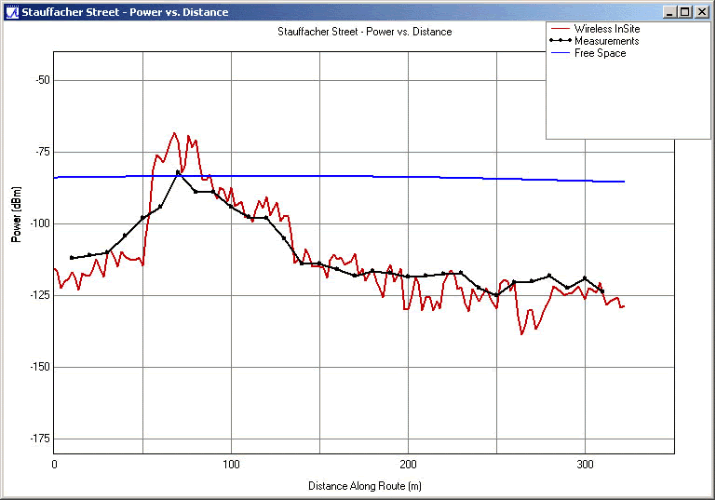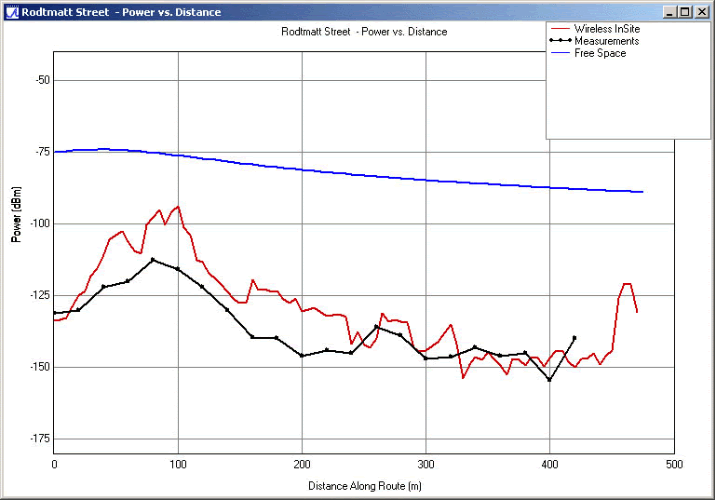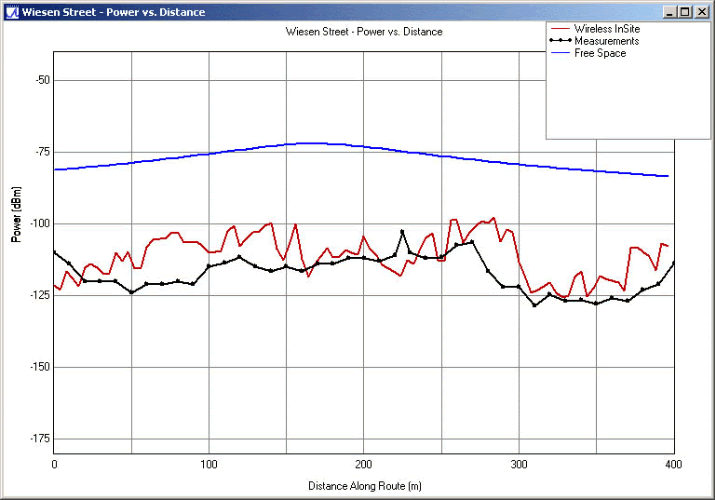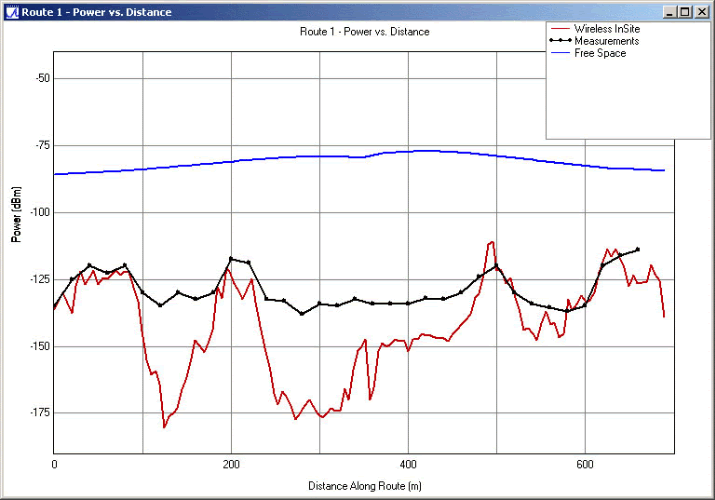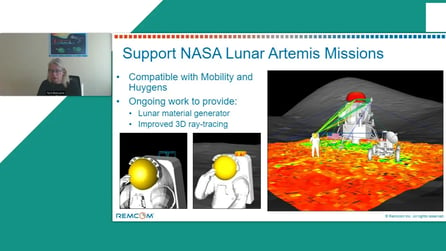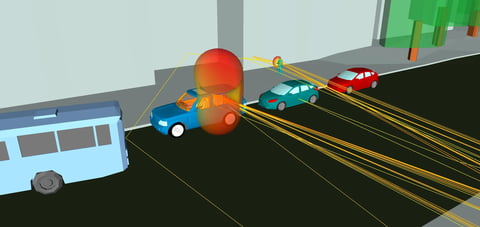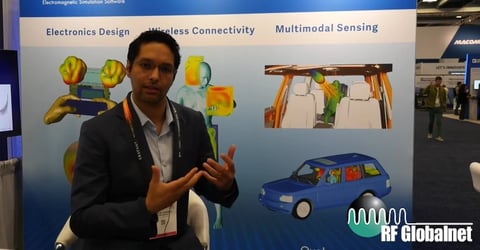Received Power Comparison In Bern, Switzerland
Building geometry data and received power measurements for Bern and Fribourg, Switzerland, are reported by Karim Rizk and Jean-Frédéric Wagen in their paper "Two-Dimensional Ray Tracing Modeling for Propagation Prediction in Microcellular Environments," published in IEEE Transactions on Vehicular Technology, vol. 46, no. 2, pp. 508-518, 1997. The following comparisons are based on measurements presented in this paper for Bern.
All the reported measurements were made with sources transmitting at 1890 MHz. All transmitters are at a height of 6 m, and receivers are at a height of 1.5 m above the ground. All measurements were made at a frequency of 1890 MHz. No information on building heights or roof shapes (flat or sloped) were included in the paper. The receiver routes and transmitter locations for Bern are shown below.
All predictions were made with Remcom's urban canyon propagation model and included paths with a maximum of eight reflections and two diffractions. Paths over rooftops could not be predicted because of the absence of information on building heights. Reflection coefficients were calculated using Fresnel plane wave coefficients for dielectric half-space with a relative permittivity of 6 and a conductivity of 0.01 S/m. The line-of-sight (LOS) pathloss values are included as references and were calculated by removing the buildings from the simulation.
